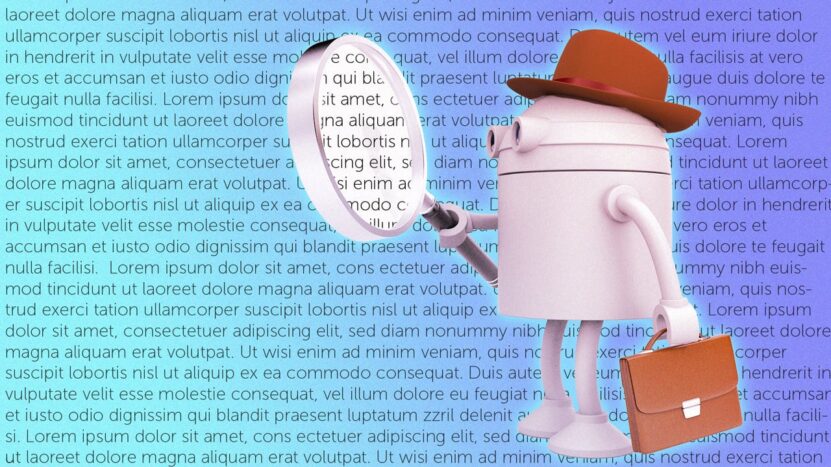Have you ever read something online and thought, “There’s no way a human wrote this”? Artificial intelligence is sneaking into more corners of our digital world, leaving people scratching their heads trying to figure out what’s real and what’s not.
Here’s how you can confidently spot robot-written text in just five simple steps.
Key Points
- Look for unnatural patterns in sentence structure or vocabulary.
- Check for repetitive phrasing or overly perfect grammar.
- Analyze the flow—does it feel human?
- Use tools to detect artificial content.
- Watch out for lack of nuance or cultural references.
Spot the Unnatural
Unnatural phrasing is one of the biggest giveaways. Machines don’t have a natural “feel” for language, so their sentences often sound stiff or too perfect. Imagine talking to someone who speaks like a grammar textbook—it feels weird, right? That’s exactly how artificial text can sound.
For instance, humans often use slang, contractions, or even incomplete thoughts when writing casually. Machines, on the other hand, stick to full sentences and formal tones that can feel jarring.
Example: Instead of saying, “Let’s get going!” artificial writing might say, “Let us begin to proceed.”
Use AI detectors
When in doubt, bring in the tech. GPT Zero is a powerful tool that detects artificial content. It analyzes text for patterns and traits often linked to machine generation.
Say you’re reviewing a blog post or an essay that feels a bit too polished. Instead of guessing, you can rely on GPT Zero. This tool doesn’t just flag artificial writing; it provides insight into what makes the text suspicious.
It’s like having a virtual assistant that specializes in sniffing out robot-written content.

Repetition ─ A Machine’s Kryptonite
Machines love repetition. They often recycle phrases or structures in ways humans wouldn’t. If you see the same word or phrase popping up unnaturally, that’s a major red flag.
Humans instinctively add variety to their language, even when explaining the same idea. Machines don’t always know when to switch things up, which leads to repetitive, mechanical-feeling text.
Example ─ A machine might write, “The apple is red. The apple tastes sweet. The apple is juicy,” instead of mixing it up with, “This apple is red, juicy, and incredibly sweet.”
Does It Flow Naturally?
Humans write with rhythm. Sentences have a flow that feels conversational and engaging. Machines, on the other hand, often lack that smoothness.
Try reading the text out loud. If it feels robotic or awkward, there’s a good chance it wasn’t written by a person. Artificial writing often struggles with transitions between ideas, resulting in choppy or overly rigid text.
Good writing should make you feel like someone is talking directly to you. If it doesn’t, you’re probably dealing with a machine.
Rely on Nuance
Depth is another area where machines struggle. Humans can infuse their writing with emotion, humor, or cultural context that makes it relatable. Machines, however, tend to stick to surface-level statements.
For example, a human writer might say, “That rainy day felt like the perfect excuse to binge-watch cheesy rom-coms.” A machine might write, “It was a rainy day, so movies were watched.” The lack of detail and personality is hard to miss.
According to a Stanford study, artificial writing often misses the emotional undertones that make language feel alive.

Watch for Lack of Cultural References
Humans draw from life experiences, pop culture, and societal trends to make their writing relatable. Machines don’t have that lived experience, so their work often lacks those personal touches.
For instance, a human might reference a trending meme or a recent sports event to connect with the reader. Machines, on the other hand, stick to generic, evergreen statements that feel disconnected.
If the text doesn’t make you nod in recognition or laugh at a subtle joke, you might be reading something artificial.
Overly Perfect Grammar Is Suspicious
While good grammar is important, overly perfect grammar can raise eyebrows. Humans make mistakes, especially in casual writing. Machines, however, rarely slip up.
If every sentence is flawless, without even a single typo or awkward phrase, it’s worth questioning the source. Machines are programmed to follow rules, so they rarely stray from them.
Look for Missing Personality
Writing should have a voice. Whether it’s serious, sarcastic, or playful, personality is what makes text come alive. Artificial writing often feels flat, like it was written by someone who’s never had a real conversation.
If the tone feels neutral or lifeless, it’s probably not human. Writing should feel like a conversation, even if it’s formal. Without that spark, it’s likely machine-generated.

Check for Overly Generic Statements
Human writing often reflects unique perspectives, specific details, or personal insights. Machines, however, tend to produce generic statements that lack originality or depth.
For example, a human might write, “Walking through Central Park in autumn feels like stepping into a watercolor painting—golden leaves crunching underfoot and crisp air waking you up.” In contrast, a machine might say, “Central Park in autumn is beautiful.”
If the text feels bland or like it’s skimming the surface without adding any real insight, it’s likely machine-generated. Depth and specificity are hallmarks of human creativity, so pay close attention to those elements.
Spot Inconsistent Tone
Humans naturally adjust tone depending on the subject, audience, or purpose. Machines, however, often struggle to maintain a consistent voice. A passage might start conversational, shift to overly formal, and then swing back to casual, leaving the reader confused.
For instance, a human might consistently write in a playful tone, adding quips or anecdotes throughout. Artificial writing might insert random shifts, like an academic explanation followed by an awkward attempt at humor.
If the tone feels like it’s bouncing between extremes or lacks cohesion, it’s a strong clue that it wasn’t written by a person.
5 Quick Tips for Spotting Artificial Writing
- Analyze structure ─ Are the sentences too uniform?
- Check vocabulary ─ Is the language overly formal or repetitive?
- Test humor ─ Does it lack subtle jokes or cultural touchpoints?
- Use AI detector ─ Scan the text for artificial patterns.
- Watch for nuance ─ Is there any emotional depth or insight?

Final Thoughts
Spotting artificial text doesn’t require a degree in linguistics. By analyzing structure, checking for repetition, and using AI detectors, you can confidently separate human creativity from machine-generated writing.
The key is to stay curious and rely on both instinct and technology. The more you practice, the better you’ll get at identifying artificial patterns.
Related Posts:
- How Celebrities Really Invest ─ A Simple No-Jargon Explainer
- 10 Steps to Launch a Successful Business in the UAE
- Finance Lease vs Operating Lease - Which One Is…
- What Is WIP in Accounting and How It Impacts Your…
- Choosing the Best Fabric for Your Baby Carrier - A…
- Seasonal Care for Your Pond Fish – What You Need to Know









